

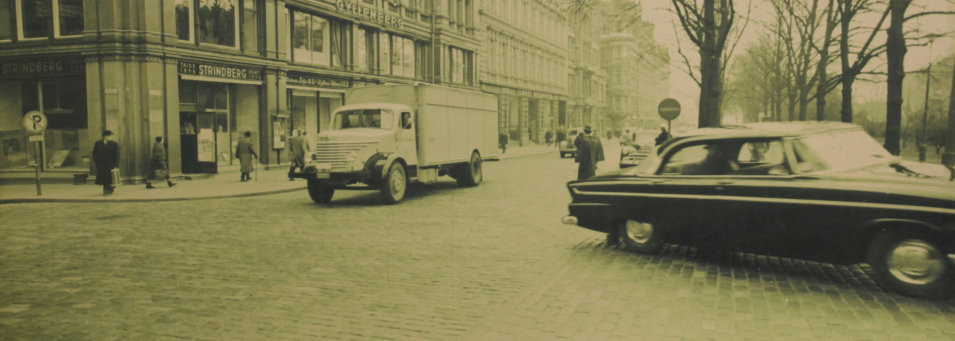

The recovering decade


BMW Isetta 300
4-wheel
They redesigned the powerplant around a BMW one-cylinder, four-stroke, 247 cc motorcycle engine which generated 10 kW (13 hp). Although the major elements of the Italian design remained intact, BMW re-engineered much of the car, so much so that none of the parts between a BMW Isetta Moto Coupe and an Iso Isetta are interchangeable. The first BMW Isetta appeared in April 1955. In May 1962, three years after launching the conventionally modern-looking BMW 700, BMW ceased production of Isettas. A total of 161,728 units had been built.Fiat 500 Belvedere
The Fiat 500, commonly known as "Topolino", is an Italian automobile model manufactured by Fiat from 1936 to 1955. The Topolino was one of the smallest cars in the world at the time of its production. Launched in 1937, three models were produced until 1955, all with only minor mechanical and cosmetic changes. It was equipped with a 569 cc four-cylinder, side- valve, water-cooled engine mounted in front of the front axle, (later an overhead valve motor) and so was a full-scale car rather than a cyclecar. The radiator was located behind the engine which made possible a lowered aerodynamic nose profile at a time when competitors had a flat, nearly vertical grill. The shape of the car's front allowed exceptional forward visibility.Fuldamobil King S7
Fuldamobil is the name of a series of small cars produced by Elektromaschinenbau Fulda GmbH of Fulda, Germany, and Nordwestdeutscher Fahrzeugbau (NWF) of Wilhelmshaven between 1950 and 1969. Though numbers produced were relatively small, the cars attracted sufficient attention to see licensed construction on four continents including Europe. In its ultimate configuration it is said to have inspired the term "bubble car".
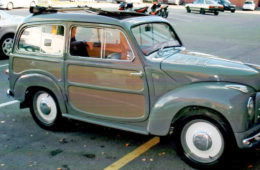
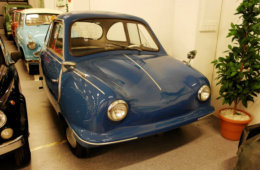
Goggomobil T400 - 1959
Goggomobil was a series of microcars produced in the Bavarian town Dingolfing after World War II by Glas. Glas produced three models on the Goggomobil platform: the Goggomobil T sedan, the Goggomobil TS coupé, and the Goggomobil TL van. The engine was an air- cooled, two-stroke, two-cylinder unit originally displacing 250 cc, but later available in increased sizes of 300 cc and 400 cc. It had an electric pre-selective transmission built by Getrag and a manual clutch. The engine was behind the rear wheels. Suspension was independent all round using coil springs with swing axles.Heinkel Kabine - 1959
The Heinkel Kabine was a microcar designed by Heinkel Flugzeugwerke and built by them from 1956 to 1958. Production was transferred under licence to Dundalk Engineering Company in Ireland in 1958 but the licence was withdrawn shortly afterwards due to poor quality control. Production restarted in 1960, again under licence, under the Trojan 200 name by Trojan Cars Ltd. in the UK, and continued until 1966. The Heinkel Kabine were also assembled from 1959 to 1962 under licence by Los Cedros S.A. As Heinkel in Argentina, they were built alongside Studebaker pickups.Victoria Spatz 250 - 57
The Spatz (German for sparrow), later renamed the Victoria 250, is a four-wheeled microcar that was built between 1956 and 1958. The car was originally conceived by Egon Brütsch as the Brütsch 200 "Spatz" a Fiberglass three-wheeler with the suspension of the front wheels and the rear wheel attached directly to the body shell. As such the car proved engineeringly unsound and trial runs on rough roads led to severe cracks in the bodywork.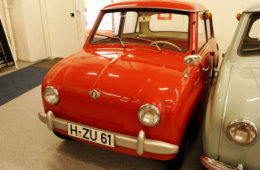

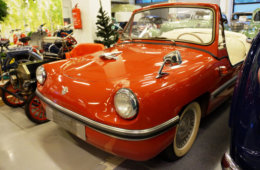
1950-1959
The Fifties was a decade that began on January 1, 1950 and ended on December 31, 1959. By its end, the world had largely recovered from World War II and the Cold War developed from its modest beginning in the late 1940s to a hot competition between the United States and the Soviet Union by the beginning of the 1960s. Clashes between communism and capitalism dominated the decade, especially in the Northern Hemisphere. The conflicts included the Korean War in the beginnings of the decade and the beginning of the Space Race with the launch of Sputnik I. Along with increased testing of nuclear weapons (such as RDS-37 and Upshot-Knothole), this created a politically conservative climate. In the United States, the The Second Red Scare caused public Congressional hearings by both houses in Congress and anti-communism was the prevailing sentiment in the United States throughout the decade. The beginning of decolonization in Africa and Asia occurred in this decade and accelerated in the following decade, the 1960s.


Photos mainly by Matti Kreivilä. Historical facts and technical details of the vehicles provided by Wikipedia. Movies YouTube.


- Autobianchi Transformable - 1960
- Autobianchi Familiare - 1962
- Autobianchi Panoramica - 1962
- Autobianchi Cabriolet - 1963
- BMW Isetta 300 - 1956
- BMW Isetta 300 - 1959
- BMW Isetta Standard
- BMW 600 - 1959
- Bond Bug ES 700 - 1973
- Fiat Topolino - 1936
- Fiat Topolino - 1939
- Fiat Topolino - 1951
- Fiat Belvedere - 1952
- Fiat Topolino - 1954
- Fiat 600 - 1955
- Fiat 500 - 1963
- Fiat 500 - 1969
- Fiat Multipla - 1965
- Fuldamobil 4-wheel - 1958
- Fuldamobil King S7 - 1959
- GLAS Isar T700 - 1962
- Goggomobil T400 - 1959
- Goggomobil T250 - 1961
- Goggomobil T250 - 1969
- Goggomobil Coupe
- Heinkel Kabine - 1959
- Honda N600 - 1970
- Jalta Saporoshez - 1967
- Lloyd Alexander TS - 1960
- Messerschmitt KR200 - 1960
- Messerschmitt KR201
- Messerschmitt KR200 - 1963
- Messerschmitt KR200 - 1964
- NSU Prinz I - 1958
- Scootacar Mk3 - 1963
- Steyr-Puch 500 -1961
- Steyr-Puch 650 - 1964
- Trabant P 50 - 1961
- Trojan 603/198 - 1964
- Trojan 3-wheeler - 1964
- Trojan 3-wheeler - 1964
- Vespa 400 - 1959
- Victoria Spatz 250 - 1957
- Zündapp Janus - 1959


- About Scooters
- Apollo moped
- Cezeta 175 - 1960
- Heinkel Tourist - 1960
- Lambretta 125 - 1953
- Puch SR 150 - 1958
- Pyrkijä moped
- Suzuki Burgman 400
- Tunturi City - 1980
- Vespa 150 - 1959
- Yamaha Passola 50 - 1980
- Zündapp Bella w. sidecar - 1960
- Zündapp Bella 204 - 1960
- Zündapp Bella 200 Deluxe - 1963
- Zündapp Combinette






























